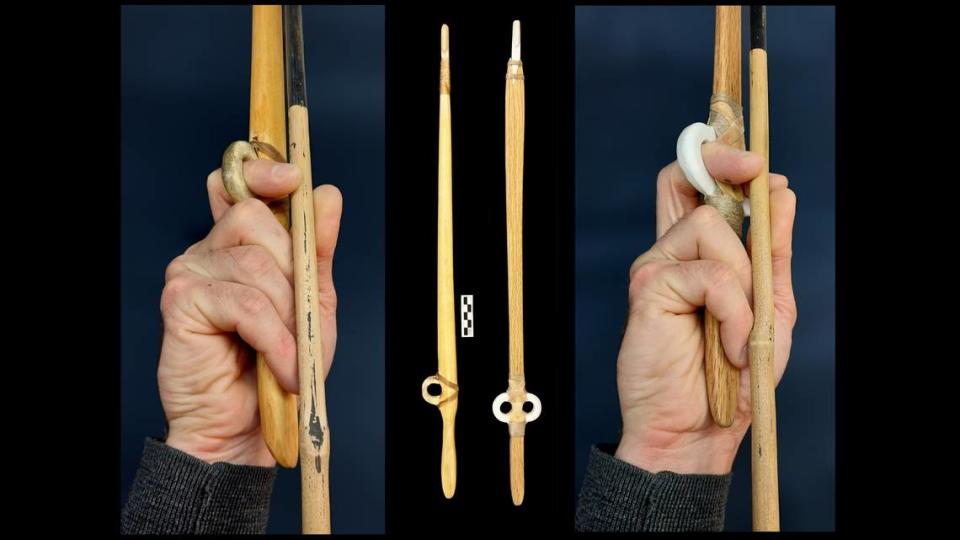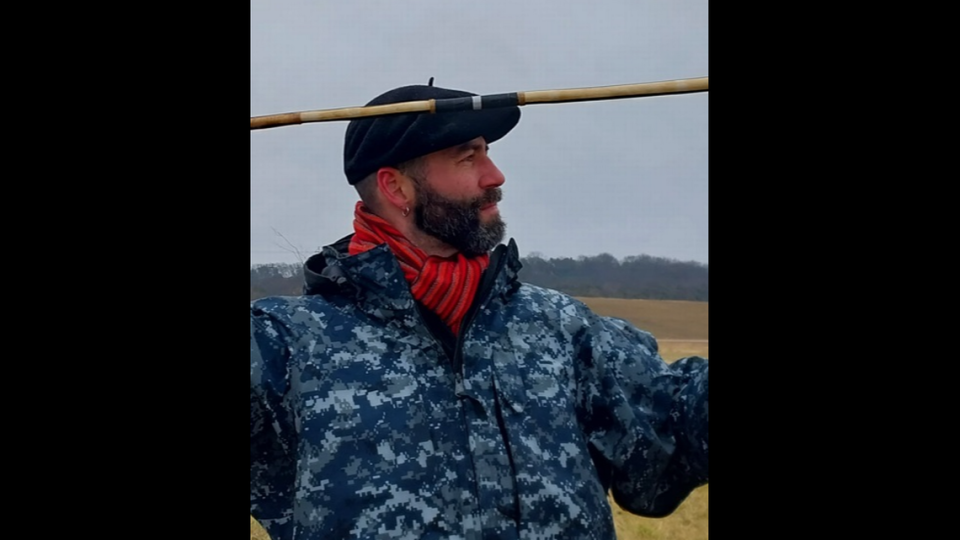‘Puzzling’ rings from ancient humans posed mystery for a century — until now, study says
A little over a century ago, archaeologists exploring a Paleolithic era cave in France came across a peculiar discovery: several open rings made of reindeer antler resembling the shape of the Greek letter Omega.
Since the initial discovery, a total of 12 rings have been excavated from three different Paleolithic sites in France. However, expertsweren’t sure what the artifacts were used for, postulating that they could have been clothing or ornaments.
That is until Justin Garnett, a doctoral candidate in anthropology at the University of Kansas, laid eyes on the rings, the university said in a May 23 news release.
“If you are familiar with spearthrowers, the shape of it jumps out at you immediately,” Garnett said in the release. “It was like an ‘aha moment’ when I saw pictures of these objects in a publication. It was hiding in plain sight.”
Garnett and his co-author, University of Kansas Associate Professor of Anthropology Frederic Sellet, propose a new theory: the small rings were used in ancient spearthrower weapons systems as finger loops, according to their study published March 22 in the Journal of Paleolithic Archaeology.

The “enigmatic crescent-shaped artifacts” — which are about 0.75 inches at their widest opening — were discovered in southwestern France at Le Placard, Petit Cloup Barrat and Cave à Endives in the late 19th century, Garnett and Sellet said. They were found among remnants of other Paleolithic tools and weapons.

If the authors’ hypothesis is correct, the open rings would mark the first time that spearthrower finger loops have been identified outside of the Americas, according to the study. Similar to the rings, when finger loops were first discovered in the Americas, they were mistaken as ornaments and jewelry.

Garnett and Sellet acknowledged that without finding any Paleolithic spearthrowers or rings connected to spearthrowers at the sites, their argument hinges on comparisons between artifacts. However, Garnett is confident in their research.
“It’s a fairly simple shape. It could serve a lot of purposes. It might even be a mistake to assume all 12 of them are the same thing just simply because they have the same shape,” Garnett said in the university’s release. “But on a percentage basis of being right, I’d personally say it’s in the high 90s. They look exactly like what I would expect a spearthrower finger loop to look like if it were made out of antler. And they come out of digs that also produced other parts of spearthrowers. So it is a tidy explanation borne out by the evidence.”
The authors said their theory could also indicate technological convergence and human adaptation that took place during the Paleolithic era.
300,000-year-old footprints offer lessons about early humans — and their families
60,000-year-old knives give insight into how early humans in Israel butchered animals
40,000-year-old cave full of animal skulls might be first known site of human rituals

 Yahoo Sports
Yahoo Sports 